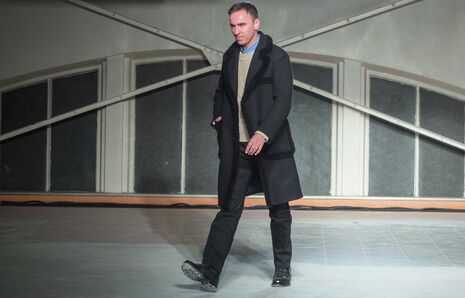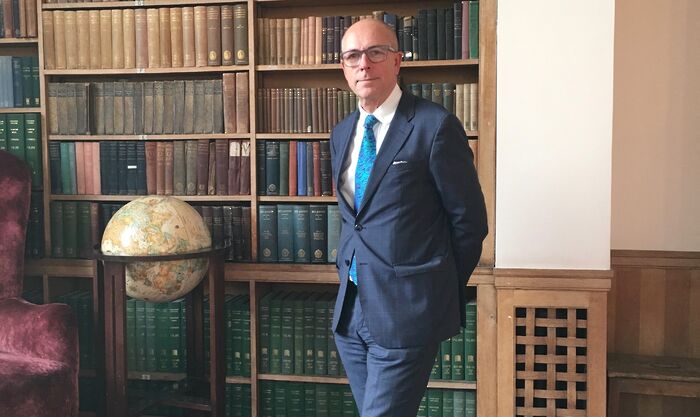Raf Simons leaves Calvin Klein
The Belgian designer will be leaving the company effective immediately

This weekend, the fashion industry was hit by news that Raf Simons would be stepping down from his role as chief creative officer at Calvin Klein. This announcement comes just under two years after his debut collection, which marked the start of a series of critically-acclaimed collections that failed, however, to find commercial success.
In a statement issued by the company “a new brand direction which differs from Simons’ creative vision” was cited as the driving force behind the split, which leaves Simons eight months short of fulfilling his contract.
The move towards luxury did not resonate as well with sales
Having joined the label in August 2016, it was hoped Simons’ success at the helm of women’s haute couture, ready-to-wear and accessories at Dior could be translated to Calvin Klein’s megabrand. An undeniably surprising choice for the company, doubts were raised at the time as to how Simons’ almost exclusively high-fashion background would cope with the demands of controlling the unity of the company’s many different Calvin Klein labels.
The industry nevertheless welcomed Simons’ appointment as an intriguing and exciting change of direction for the house. The designer’s high-fashion approach to the brand’s mass-market appeal didn’t seem to disappoint, with collections praised for giving the otherwise minimalist aesthetic a political edge, redefining of an all-American brand. Some of Simons’ highlights include a viral campaign featuring the Kardashian clan, a re-boot of the cowboy-boot, and innovative re-workings of some of the brand’s minimalist classics (think Canadian tuxedos reworked in sumptuous black leather).
However, despite being hailed as elevating the label to the ranks of high fashion, the move towards luxury did not resonate as well with sales, a marked dissonance appearing between Simons’ high-fashion background and the needs of a multi-billion-dollar business. Smaller hiccoughs along the way seemed to signal deeper issues though, with the denim collection struggling to simultaneously keep its established place and navigate its new luxury format, and the 205W39NYC label failing to land with the ready-to-wear market.
It remains to be seen what the future holds for both Simons and Calvin Klein, though the sudden departure is perhaps not wholly surprising. Emanuel Chirico (the chief executive of PVH Corp., which owns Calvin Klein) deemed the 205W39NYC collections a “fashion miss,” telling Business of Fashion in November that the brand would be taking a more “commercial approach” . Following Simons' departure, Calvin Klein will not be presenting a Autumn/Winter 2019 collection at New York Fashion Week in February.
Though the importance of sales has never been something creatives can escape, this latest departure may be a symptom of the rise of a very particular newcomer to the sales market: the influencer. One of the most lucrative and effective advertising strategies for brands in 2018, Calvin Klein landed underwear and jeans endorsements with influencers that access millions of followers, such as the Biebers and the Kardashians. With instant viral hits across social media, the demographic driving sales in this sector suddenly looked much younger, buying into the accessibility of this new form of luxury. As was perhaps to be expected, this sales peak did not translate to the higher end of the Calvin Klein spectrum: decidedly less accessible and more exclusive in its image and target demographic.
How, then, can such a brand reconcile the young demographic that prizes the more accessible brand image with the move to high-end luxury elsewhere? The perfect balance of an ever-more accessible fashion scene, thanks to of platforms such as Instagram, with the heretofore exclusive allure of the luxury market is set to define brand success in the coming years. We can but hope, however, that this commercial drive will not stifle brand creativity, jeopardising the innovative potential of some of the designers so loved by the industry for a blander, albeit more crowd-pleasing, alternative.
 News / Caius mourns its tree-mendous loss23 December 2025
News / Caius mourns its tree-mendous loss23 December 2025 Comment / Yes, I’m brown – but I have more important things to say22 December 2025
Comment / Yes, I’m brown – but I have more important things to say22 December 2025 News / Cambridge welcomes UK rejoining the Erasmus scheme20 December 2025
News / Cambridge welcomes UK rejoining the Erasmus scheme20 December 2025 News / CUP announces funding scheme for under-represented academics19 December 2025
News / CUP announces funding scheme for under-represented academics19 December 2025 Interviews / Politics, your own way: Tilly Middlehurst on speaking out21 December 2025
Interviews / Politics, your own way: Tilly Middlehurst on speaking out21 December 2025










